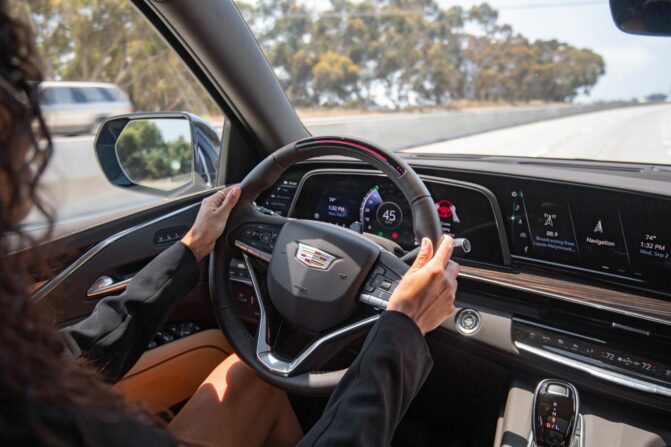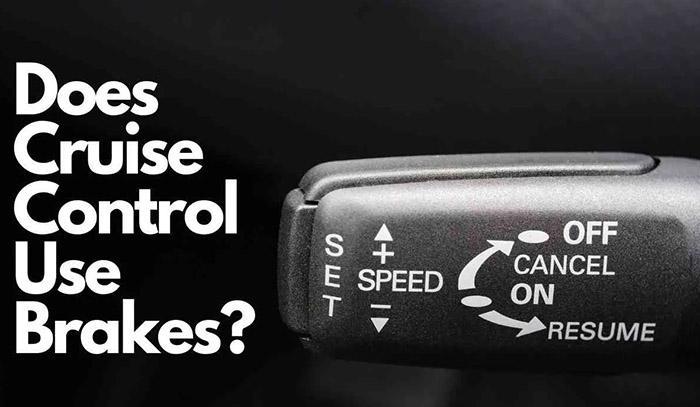Table Of Content

The device saw its first commercial use when installed on the 1958 Chrysler Imperial. Vehicles with adaptive cruise control are considered Level 1 autonomous vehicles. Level 1 vehicles usually also have features like parking assistance, lane-keep assistance, and automatic braking. It’s not exactly handy for busy town roads but comes in quite beneficial during highway driving. Cruise control lets you maintain your ride at a certain speed level without having to deal with the gas pedal.
Wheel Alignment vs. Balance: What’s the Difference?
To optimize fuel efficiency, it’s essential to regularly check and maintain the correct tire pressure. Refer to your vehicle’s manual or the sticker located on the driver’s side door jamb for the recommended tire pressure. Investing in a reliable tire pressure gauge can help you ensure your tires are properly inflated.
Can cruise control use more fuel?
Sinclair said his first experience with the feature was in 1985 following his purchase of a 1982 Mazda 626 with a manual transmission. He too wondered if cruise control saves gas but found it difficult to get an accurate analysis. This is even true when operating a vehicle that possesses adaptive cruise control. Though many drivers are lulled into a false sense of security when operating a vehicle under these conditions, one must be capable of maintaining full vehicle control at any given time.
Thoughts on “Does Cruise Control Save Gas?”
When using cruise control, it is always advised to keep your feet near a vehicle’s brake pedal at all times. Both road and traffic conditions can deteriorate in moments, necessitating additional input upon a driver’s behalf. Since fuel consumption is greatest during acceleration, it stands to reason that the best way of achieving peak fuel economy would be to maintain a set speed.
While the effectiveness of cruise control varies, utilizing it judiciously in appropriate conditions can contribute to gas savings. Understanding the nuanced role of this feature empowers drivers in the quest for both efficiency and a smoother, controlled driving experience. Many drivers are fooled into thinking that their vehicle’s transmission is being damaged when a vehicle’s cruise control causes an engine’s RPMs to spike during downshifting.
So, take a moment to assess these factors before hitting the road to ensure you’re getting the most out of every drop of fuel. Wait for a moment when it’s appropriate to use cruise control before turning it on. Check that the road is clear, that weather conditions are good, and that you’re on a highway or a road where you won’t have to stop or change speed often. If conditions are right to use cruise control in your car, turn on the system. Eventually, we’ve dealt with the matter of whether cruise control saves gas.

Although polarizing among drivers, automatic stop-start functions definitely save fuel, by eliminating the waste of idling at traffic lights. AAA tested the feature and determined that it resulted in a 5 to 7 percent increase in fuel economy. One common belief is that using cruise control always leads to fuel savings.
Maximize your time
Quick acceleration and deceleration change the vehicle’s momentum drastically and wastes fuel. So, using cruise control is most fuel-efficient on level highways and long uphill and downhill grades. For instance, revving your car and keeping the engine spinning at high RPMs will only burn more fuel.
Traffic Conditions
Wind resistance, also known as aerodynamic drag, can have a significant impact on fuel efficiency, especially at higher speeds. When your vehicle encounters resistance from the air, it requires more energy to maintain its speed, resulting in increased fuel consumption. Additionally, cruise control can reduce driver fatigue on both long and short trips. By allowing the driver to relax their foot and focus more on the road ahead, it can contribute to a safer driving experience.

Though this feature can help mitigate accidents stemming from driver fatigue, it can also lull drivers into a false sense of security. A tired driver using adaptive cruise control might not resume control of the vehicle quickly enough in an accident or emergency. Adaptive cruise control systems in modern cars can even recognize another vehicle in case you get too close to it, but it’s still best if you use cruise control with a dose of precaution. It’s not effective at all when you’re in stop-and-go traffic, and using it on back roads to maintain 35 mph isn’t particularly useful or desirable, either. The automaker contributed a turn signal stalk-mounted switch with a pushbutton to set the speed, but the feature was fundamentally Speedostat cruise control for decades.
With this added safety feature – drivers can rest assured their vehicles will maintain an appropriate distance from other cars and brake when necessary to avoid collisions. If you’re on a long road trip, you may turn on cruise control to keep from feeling tired or uncomfortable during the drive. VERIFY viewer Tracy reached out from the road to ask if cruise control can also help you save money on gas. One potential downside to using cruise control is that it can result in the driver having a reduced reaction time when they must respond quickly to an unexpected situation on the road. Motorbiscuit reminds drivers that cruise control is not a hands-free driving feature. Distracted driving is a bad driving habit that can lead to crashes, so always stay alert.
It doesn’t, so there’s no question of the system itself using gas or diesel and negating some of the fuel-saving using the system provides. We’ve established that if you’re driving on a highway, keeping a constant speed will use less fuel than driving without cruise control. However, away from the highway, using cruise control can actually mean using more fuel than if you were driving normally. Both the cruise control and the accelerator are attached to the throttle with a cable. Both cables move when cruise control is on, which is why you might see your gas pedal move when cruise control is engaged.
Does idling use a lot of petrol? Here's the truth - Drive
Does idling use a lot of petrol? Here's the truth.
Posted: Mon, 31 Jul 2023 07:00:00 GMT [source]
Remember, setting an appropriate speed, using cruise control on highways, and avoiding unnecessary braking are key factors in optimizing fuel efficiency. So, the next time you hit the road, engage cruise control and enjoy a more efficient and cost-effective journey. Unnecessary braking can have a negative impact on fuel efficiency, especially when using cruise control. When you encounter a downhill slope, cruise control can sometimes apply more braking than necessary, which leads to wasted energy. To optimize fuel efficiency, it’s important to be aware of the road ahead and disengage cruise control if you anticipate the need to brake.
Most of the time, if the driver wants to disengage cruisecontrol they simply press the brake pedal, although they could press thedisengage button if they preferred. It’s likely you’ll want to disengage thesystem quickly in most cases, so the brake pedal is going to be the favorite option. Of course, this assumes you’re a driver who does drive more efficiently than cruise control. If you’re one of those drivers with heavy feet who are constantly hard on the gas and the brakes, your cruise control might not be any less efficient than your driving. Most controls have on and off buttons, as well as accelerate and decelerate buttons, which let you increase or decrease your speed by 1 mph.
Some manufacturers include three settings, while others can have up to five. If you have ACC, the car will automatically brake and accelerate to keep the correct distance while generally maintaining your set speed when possible. Mending your ways will save money even in times of low gas prices, as it will cut your spending on insurance rates and speeding tickets, too. One of the flaws of traditional cruise control is that drivers often take over the vehicle’s acceleration at varying times, skewing the fuel efficiency benefit of the setting.
Instead, keep your right foot near (not resting on top of) the brake pedal. A vehicle experiences the least amount of wear when operating at a constant, steady speed, for prolonged periods of time. Hi, I'm Chris Brunson, and I'm passionate about diesel fuel and all things related to it. With over 5 years of experience in the industry, I've gained a deep understanding of diesel fuel properties, engine performance, and fuel efficiency.

No comments:
Post a Comment